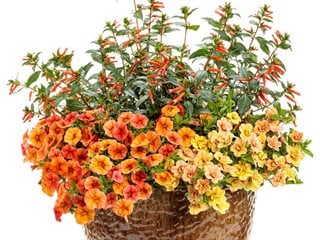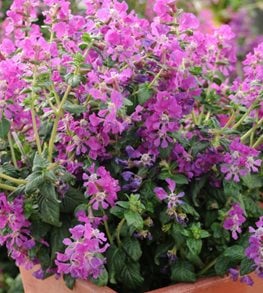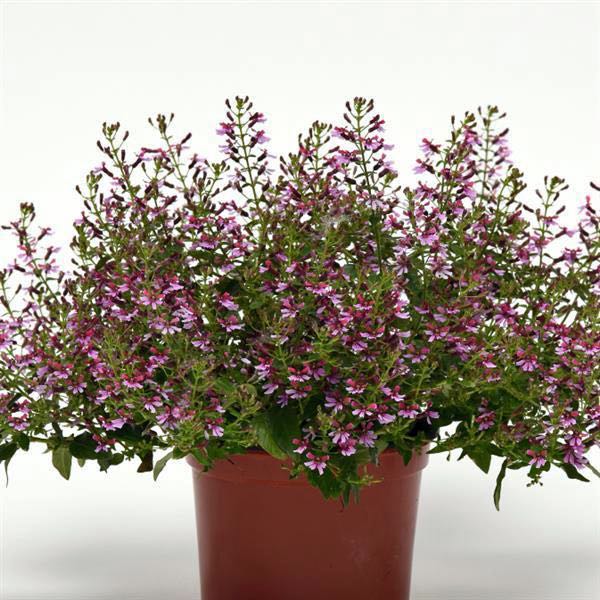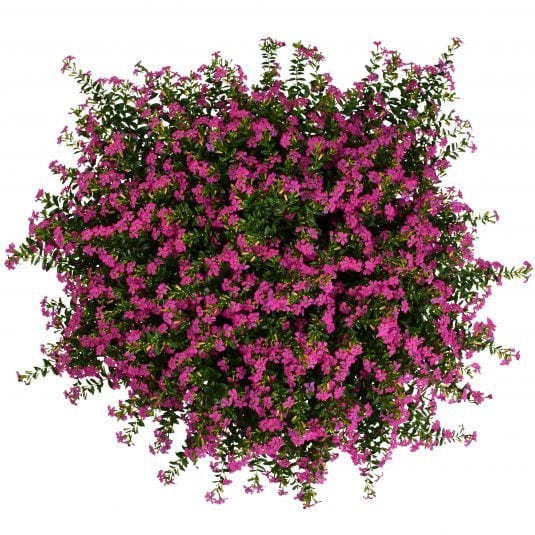Using Cuphea in Garden Design: Practical Tips for Stunning Borders & Containers

Cuphea might seem like a foolproof choice for garden borders and containers—after all, it’s billed as colorful, carefree, and hummingbird-friendly. But let’s drop the glossy brochure for a second: there are pitfalls every gardener stumbles into with Cuphea that rarely get airtime. I know this not just from years of tinkering in my own patchwork garden beds, but from trading “I can’t believe that happened” stories with fellow plant lovers over muddy boots and cold drinks.

If you’re standing in your backyard (or on your balcony) clutching a flat of Cuphea and wondering why yours never seem to look like the showy displays online, you’re not alone. Nobody tells you about the first-year flops or little quirks that trip up both rookies and green-thumbed pros. Here’s what no one talks about—plus exactly how to avoid those facepalm moments.
The Mistakes Everyone Makes with Cuphea Borders & Containers
1. Ignoring Microclimates (“Full Sun” Isn’t Always What You Think)
Every tag says “full sun for best blooms,” right? So we hunt out our brightest spots… only to find wilted leaves by 2 p.m. Here’s the secret: urban gardens often trap more midday heat than rural ones, while shaded yards can be deceptively dim.
My failed first attempt:
Back in 2019, I lined my southern border—prime “full sun!”—with ‘Vermillionaire’ Cupheas. By July, half had crisped leaves while the others barely flowered. Turns out the neighbor’s white fence reflected so much heat that soil temps hit 95°F by lunchtime—even drought-tolerant Cupheas were unhappy.
What works:
Spend one sunny day tracking which spots get gentle morning light versus punishing afternoon rays. In ultra-hot zones, tuck Cuphea where it gets dappled light after noon—a spot under high limbed-up trees often works better than an exposed patio ledge.
2. Soggy Soil Sabotage (and False Confidence in Containers)
We all hear “well-drained soil” but almost nobody tests it. Gardeners frequently treat container-grown plants like houseplants—watering at every sign of wilt.

Sensory detail:
Soggy roots smell… odd (think old mulch after rain). When water stands longer than two minutes above your newly planted bed, trouble’s brewing.
Personal numbers:
I lost three entire pots of ‘Sriracha Rose’ last spring because I used regular bagged topsoil; every one turned to concrete slicks after heavy rain.
Better approach:
- For borders: Dig a test hole. Pour in two cups of water; if it vanishes within ten minutes, you’re good.
- For containers: Add at least 30% perlite or bark chips to potting mix for airflow—you want the mix to feel fluffy and feather-light when dry.
- Never place containers directly onto nonporous surfaces like concrete patios without risers underneath (water pools faster than you think).
3. Planting Like Soldiers on Parade
It feels safe to evenly space Cupheas in tidy rows at exact intervals as shown on tags (usually 12–18 inches apart). Know what happens? Your border looks sparse all summer—and mass planting is where real wow-factor happens!
True story:
The first year I tried edging my walk with single-file Cupheas spaced “professionally,” they looked lonely and never quite filled out—that negative space attracted more weeds than pollinators.
Pro move:
Cluster groups of three or five together—even six-inch gaps vanish quickly and create real density (which wildlife notices). Imagine them as fireworks rather than fence posts!
4. The Overzealous Waterer Syndrome
Especially in containers, it takes real discipline not to drench your plants after a long day at work—or guilt-water just because yesterday was hot.

Sensory tip:
Dry container mix feels powdery an inch down; damp soil is cool but slightly springy (not sticky).
Here’s my rule-of-thumb: Stick your finger into the potting mix daily around breakfast time; if it comes up dusty but not parched, water deeply until excess drains out—but then hands-off until needed again! Mark it on your phone or set a reminder—consistency beats frequency.
5. Deadheading Anxiety & Neglect
Let me be honest—I’ve ignored spent blooms some weeks thinking “It’ll keep blooming anyway.” Sure enough, by late August all flowering slowed and stems stretched awkwardly toward sunlight gaps created by neglect.
There’s no secret here except routine: Snip away faded flowers every week while making coffee or watering—it takes less than five minutes if you do it regularly (and becomes oddly meditative).
6. Expecting Them to Be Pest-Free Unicorns
Most Cupheas shrug off pests—but plant them next to problem-prone annuals and they aren’t always invincible! Aphids sometimes bounce over from stressed petunias or roses nearby if conditions are crowded and humid.
If you spy sticky residue beneath leaves or wonky curling tips, hose off plants early in the morning (don’t wait for major outbreaks). And don’t hesitate to prune out infested bits ruthlessly—they rebound fast when healthy stems remain intact!

Two Real-Life Redesigns After First-Year Flops
Maya's Border Fix:
Her initial trial? Single file ‘Vermillionaire’ against tough clay soil beside her driveway—three died within weeks from poor drainage during summer storms.
Her winning formula: Clustered trios mixed with sandier compost raised above grade by two inches—with coreopsis planted behind for height contrast. Hummingbirds now zip through daily and there hasn’t been a dead patch since she ditched row-planting perfectionism!
Eddie's Patio Turnaround:
First try: Standard potting soil + shallow saucers under all pots = overflow after thunderstorms + yellowing.
Second try: Switched to chunky cactus mix, used terracotta feet under each container for airflow…and grouped three sizes together using bold purple ‘Lavender Lace’ trailing down one side.
Result? Nonstop color plus surprise butterfly visits—and far fewer fungal leaf spots even after heavy summer rains!
Speed-Bump Summary: Why These Mistakes Happen
- We trust labels instead of observing sunlight hour-by-hour.
- Potting up feels easier than testing drainage rigorously—which costs us later.
- We love symmetry…but nature thrives on clusters over strict lines!
- Eager watering and neglecting quick weekly maintenance snowball into setbacks nobody wants to admit online.
But once you know these landmines—and steer around them—you move past frustration fast! Each attempt brings fresh confidence as borders thicken up and containers actually spill over instead of fizzling midseason.
If You Want Repeatable Success:
- Map actual sun patterns using your phone camera hourly before planting.
- Amend both bed and container mixes for quick drainage—err toward fluffier composition always!
- Cluster rather than row plantings—let go of perfection; let movement happen!
- Stick to checking moisture below surface—not by eye alone.
- Commit five minutes per week deadheading/pinching back leggy growth before it snaps under its own weight.
- Isolate new additions from known pest magnets until they’ve settled in robustly.
No need for expensive gadgets—in fact, most fixes cost nothing but attention and a willingness to tweak old habits (use existing kitchen knives or even sturdy thumbnail pinches for pruning!). And remember—the best-looking gardens reveal trials AND triumphs along the way.
Keep notes on combinations that fizzled versus those that flew; experiment boldly next season instead of falling back on status quo layouts…because nobody ever gained neighbor envy—or personal satisfaction—from hiding mistakes others could learn from too!
Happy experimenting—and may your next round of Cuphea planting skip right past the classic blunders most folks carefully edit out of their gardening tales!



